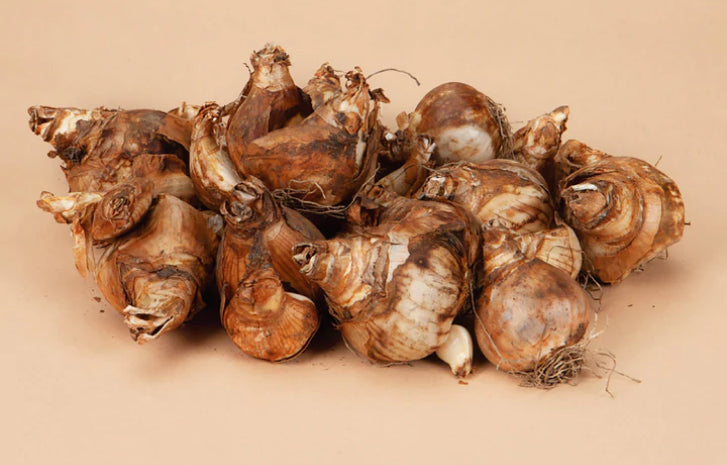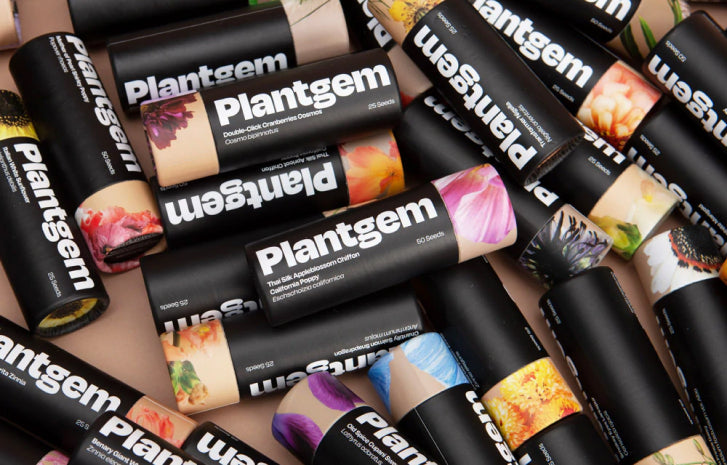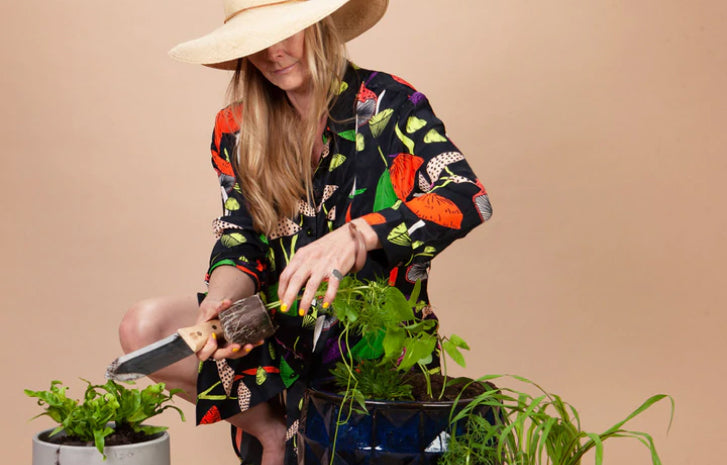Anemones

Description
Anemones are one of our favorite plants to grow. They add an unexpected element to the spring garden with their enchanting colors, graceful shape, and modern silhouette. Each corm produces up to 20 flowers, so they make a big impact, too.
| Height
|
10-16”
|
| Light
|
Full sun or part shade
|
| Zone
|
Annual in zones 3-6, tender perennial in zones 7-10
|
| Shipping
|
Beginning in fall
|
| Includes
|
20 corms in a cloth bag, with a wooden plant marker.
|
| Botanical Name
|
Anemone coronaria
|
Conditions
| Deer
|
Deer resistant
|
| Kids+Pets
|
Non-toxic
|
| Climate
|
Likes mild temperatures
|
| Water
|
Water regularly once sprouted
|
| Indoors+Pots
|
Grows well in containers outside
|
Receiving and Planting
The first thing you should do when you receive your Anemone corms is: don’t plant them just yet! Your corms will look a bit like hard little nuggets - but don’t be deceived - they hold a lot of flower power! They’ll arrive dehydrated and ready to store somewhere cool and dark for the winter, or for our warm region friends, for a couple extra weeks until the weather chills down a bit. Planting time depends on where you live. In zones 8 and warmer, plant your corms in the fall for spring blooms. If you live in a zone colder than 8, with significant stretches of freezing weather in the winter, plant in the late winter/very early Spring instead, about 6 weeks before your last hard frost. Soak in room-temperature water for 10-12 hours before planting, and allow a little trickle of water to run into the bowl as they soak in order to increase the oxygen in the water. Plant 5" apart, 1-2" deep, with the point end sticking down (but if you can’t figure out the pointy end, don’t worry, just stick it in there - it will sort itself out). Fill in the holes and compress the soil firmly. Water them well - a good long soak. Stick your Plantgem marker in the middle of the area so you remember where your Anemones are snoozing.
Pre-Sprouting
We highly recommend pre-sprouting your corms. Your flowers will bloom a couple weeks earlier if you plant the corms pre-sprouted rather than directly after soaking. Also, you can be sure you’re planting only viable corms. You’ll need a flat-bottomed container, ideally plastic, like a seed tray, or even a Tupperware storage container. Start by washing it really well with warm soapy water and rinsing thoroughly. Then, add a layer of fresh dirt, about 2-3” deep, and lightly moisten it with water. (A spray bottle is useful, so you don’t soak the dirt - you just want it damp). Soak your corms as directed above, then place them gently into the soil, making sure they are not touching. Cover them completely with more damp soil. Cover the dirt completely with another tray, or anything you can find that will apply very gentle weight to the soil. (Really, really gentle - you don’t want to squish the little guys - think towels, a folded tarp, etc.) Store them somewhere completely dark and dry, that stays between 40-50 degrees, and where critters can’t get to your corms. (A tricky place to find, we know. Basements, garages, and attics are all good options). You’ll want to give them 10 days to 2 weeks to pre-sprout. Check on your corms every 3-5 days and remove any that are growing mold or looking/smelling funky/rotting. Spray with more water if the soil is dry. Once you see little white hairs sticking out of your corms, it’s time to plant them!
Sun, Soil, Water
Anemones prefer healthy, well draining soil. Enrich with compost for happy plants. They like cooler climates and gentle warmth. Plant them where they get 6+ hours of sun in cooler regions and afternoon shade in hotter regions. Begin to water when you see the sprouts poke up from the dirt. Find the balance with watering them. Too wet and they will rot, too dry and they will wither. Stick your finger in the dirt to check the moisture level before you water. The dirt should be moist. If it’s dry and crumbly, increase your watering schedule. If it’s quite wet (and maybe even stinky), water less.
Flowers and Foliage
With over 20 flowers per corm, and 6-10 weeks of blooming in early to mid-spring, you're going to be rolling in flowers. Cut them and give some to your Mom. Or someone else’s Mom. Cut back the withered foliage once it turns yellow in the summer - wait as long as you can, so the corms can store up as much sunlight as possible. If you are in zone 8 and colder, you can dig them up, dry them out for a few days (in the sun or inside where they can lay out) then store them in a cool dry place. For zones 8-12 - just leave them be for their triumphant return next spring.
Problem Solving
Plant your corms in healthy soil, then resist fertilizing - they don’t like too much. Pull weeds from around the base. Anemone, like so many lovely flowers, are prone to fungi (powdery film) and bad bugs. Protect them with neem oil spray or a veggie-safe anti-fungal+anti-pest product. Gently rinse the foliage in the evening or when it is in the shade, and let it dry before applying. If you know a frost in coming, cover your planting area with a frost cloth.
Description
Anemones are one of our favorite plants to grow. They add an unexpected element to the spring garden with their enchanting colors, graceful shape, and modern silhouette. Each corm produces up to 20 flowers, so they make a big impact, too.
| Height
|
10-16”
|
| Light
|
Full sun or part shade
|
| Zone
|
Annual in zones 3-6, tender perennial in zones 7-10
|
| Shipping
|
Beginning in fall
|
| Includes
|
20 corms in a cloth bag, with a wooden plant marker.
|
| Botanical Name
|
Anemone coronaria
|
Conditions
| Deer
|
Deer resistant
|
| Kids+Pets
|
Non-toxic
|
| Climate
|
Likes mild temperatures
|
| Water
|
Water regularly once sprouted
|
| Indoors+Pots
|
Grows well in containers outside
|



